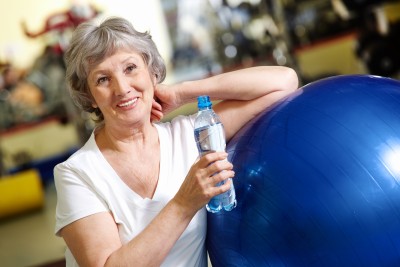According to the American Heart Association, 700,000 people annually in the United States suffer a stroke.(1) The incidence of stroke is likely to continue to escalate because of an expanding population of elderly Americans; a growing epidemic of diabetes, obesity, and physical inactivity among the general population; and a greater prevalence of heart failure patients.(2)
Following a stroke, survivors will often work with Physical and Occupational Therapists to restore strength and control through exercise programs. However, most insurance companies only pay for a certain number of therapy sessions per calendar year which can leave a gap in the rehabilitation process. It’s important to continue the exercises that a physical therapist has prescribed and progress safely through an exercise program to regain strength and functional movement. This is where a certified personal trainer with experience in rehabilitative exercises can come in. A certified personal trainer can be part of the healthcare team and can design a program which is both safe and functional. Walking, flexibility exercises, and light strength training can help a stroke survivor continue on the path of rehabilitation. Swimming is also another beneficial form of exercise if a pool is available.
 Another benefit of exercise for stroke survivors is prevention of recurrent stroke or heart attack, which occurs frequently in people who have had a stroke.(3) Reducing risk factors can decrease the incidence of recurrent strokes and coronary events. An aerobic conditioning program can enhance glucose regulation and promote decreases in body weight and fat stores, blood pressure, C-reactive protein, and levels of total blood cholesterol, serum triglycerides, and low-density lipoprotein cholesterol.(4) Exercise also increases high-density lipoprotein cholesterol and improves blood rheology, hemostatic variables, and coronary endothelial function.(5)
Another benefit of exercise for stroke survivors is prevention of recurrent stroke or heart attack, which occurs frequently in people who have had a stroke.(3) Reducing risk factors can decrease the incidence of recurrent strokes and coronary events. An aerobic conditioning program can enhance glucose regulation and promote decreases in body weight and fat stores, blood pressure, C-reactive protein, and levels of total blood cholesterol, serum triglycerides, and low-density lipoprotein cholesterol.(4) Exercise also increases high-density lipoprotein cholesterol and improves blood rheology, hemostatic variables, and coronary endothelial function.(5)
It is very important that a personal trainer communicate with healthcare professionals about their client after a stroke, including the physician and physical & occupational therapists to best help the client. Safety should always come first when exercising. Overexertion and pain should always be avoided. Decrease in balance, spasticity(6), memory, and fatigue is common after a stroke. Like everyone else, stroke survivors will have good days and bad days. However, modification of exercises can help after a stroke to get individuals on the path to better physical health.
Kris Pritchett Cameron is the owner of ReNu Your Life Fitness & Neuro Wellness in Cedar Rapids, Iowa and a certified personal trainer through the American Council on Exercise. Kris has dedicated over 20 years to the health and fitness of others. Kris has worked with all ages from children to the elderly, but her specialty is medical fitness and working with older adults. With a background in healthcare and physical rehabilitation, Kris has experience working with clients who have orthopedic injuries, arthritis, Multiple Sclerosis, Parkinson’s Disease, Alzheimer’s, cancer, diabetes, heart disease, osteoporosis, bariatric surgery, mental disorders, and stroke.
References
- American Heart Association. Heart Disease and Stroke Statistics-2003 Update, Dallas TX
- Gillum RF, Sempos CT. The end of the long-term decline in stroke mortality in the United States? Stroke 1997; 28:1527-1529
- Mol VJ, Baker CA, Activity intolerance in the geriatric stroke patient, Rehabil Nurs. 1991; 16:337-343
- Franklin BA, Sanders W. Reducing the risk of heart disease and stroke. Physician Sports Med. 2000; 28: 19-26
- Hambrecht R, Wolf A, Gielen S, et al. Effect of exercise on coronary endothelial function in patients with coronary artery disease. N Engl J Med. 2000; 342: 454-460
- Spasticity is a condition where muscles are stiff and resist being stretched. It can be found throughout the body, but is common in the arms, fingers, or legs. Hope: The Stroke Recovery Guide. 2010 National Stroke Association

